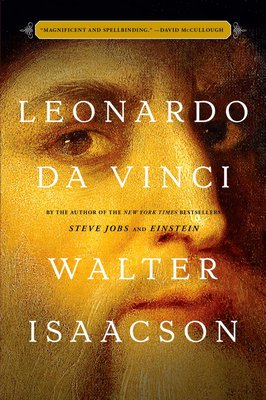
With his new book, “Leonardo da Vinci” (Simon & Schuster, 599 pp., $35) Walter Isaacson has written what might be the definitive biography in English of Leonardo.
Mr. Isaacson, the university professor of history at Tulane University, has been CEO of the Aspen Institute, chairman of CNN, and editor of Time magazine. He is the author of biographies of Steve Jobs, Benjamin Franklin, Albert Einstein and Henry Kissinger. He is also the author of “The Innovators,” a history of computers and the internet.
Leonardo was the illegitimate son of a notary, Piero da Vinci. We think of Leonardo primarily as a painter. One would receive little criticism by claiming that—excepting Michelangelo’s Sistine ceiling—the two greatest paintings of the Italian Renaissance are “The Last Supper” and the “Mona Lisa.” Yet there were other aspects of his genius, and they are to be found in what we refer to as “The Notebooks.” There are more than 7,000 pages still extant and there are probably as many that have been lost. They are the source that Mr. Isaacson plumbed in his study of Leonardo. They are not finished works, but sketches, doodles, maxims, examinations of how water flows and eddies, architectural and engineering drawings, pictures of weapons of war, optics, geology, thoughts on nature and painting, and countless anatomical drawings. At the same time as he was painting Mona Lisa’s smile he was dissecting the mouth of a cadaver to see how the facial muscles produced a smile. He dissected more than 30 cadavers in the course of his studies. He also dissected a live pig so that he could see how the heart valves functioned.
Almost all the textual accompaniment to Leonardo’s drawings in “The Notebooks” was written in his famous mirror writing. This was not an attempt to hide what he was doing from prying eyes, but rather it was because he was left handed and it was easier for him. Moving the pen from right to left across the page avoided smudges. Paper was expensive and not to be wasted. Every space on the page was filled.
Leonardo began his career as an apprentice in the studio of Verrocchio, in Florence, learning technique, painting portions of Verrocchio’s canvases. Today we have the romantic view of “the artist,” working alone in his or her studio and fired by imagination. In the Renaissance, artists had studios or workshops where several painters might work on a painting in an assembly line. “Drawing in company is much better than alone,” said Leonardo.
After several years, the apprentice exceeded the master in skill. Verrocchio and Leonardo collaborated on “The Baptism of Christ.” Leonardo painted one of the exquisite angels on the canvas and Verrocchio was so awed by it that, according to the Renaissance biographer Vasari, he “resolved never again to touch a brush.”
Leonardo developed the technique known as “sfumato,” a softening of the lines in a painting. One notices this particularly in Mona Lisa’s mouth and eyes. Her smile is ambiguous and no matter where you are in the room it seems that her eyes are looking directly at you.
Like Michelangelo, Leonardo was homosexual and he was arrested several times for his activities. But unlike the tormented Michelangelo, Leonardo accepted his predilection and was quite at ease with it. He even wrote a comic treatise on it.
Leonardo had difficulty finishing works. He was easily distracted. In Mr. Isaacson’s words, “He preferred the conception to the execution.”
After working on it for 16 years he did finish the “Mona Lisa,” even if not to his satisfaction. Mr. Isaacson says of it: “The ‘Mona Lisa’ is the work of a man who had used [his] skills to immerse himself in a lifetime of intellectual passions. The inquiries chronicled on his thousands of notebook pages—of light rays striking curved objects, dissections of human faces, geometrical volumes being transformed into new shapes, flows of turbulent water, the analogies between the earth and human bodies—had helped him fathom the subtleties of depicting motion and emotion. ‘His insatiable curiosity, his restless leaps from one subject to another, have been harmonized in a single work,’ Kenneth Clark wrote of the ‘Mona Lisa.’ ‘The science, the pictorial skill, the obsession with nature, the psychological insight are all there, and so perfectly balanced that at first we are hardly aware of them.’”
Mr. Isaacson’s previous biographies were about creators who had the ability “to make connections across the disciplines” and who married “observation and imagination.” In effect they are renaissance men and women. With this book he captures the original article. Mr. Isaacson’s book is beautifully made and lavishly illustrated. It is exhaustively researched, straightforwardly written, and endlessly fascinating.